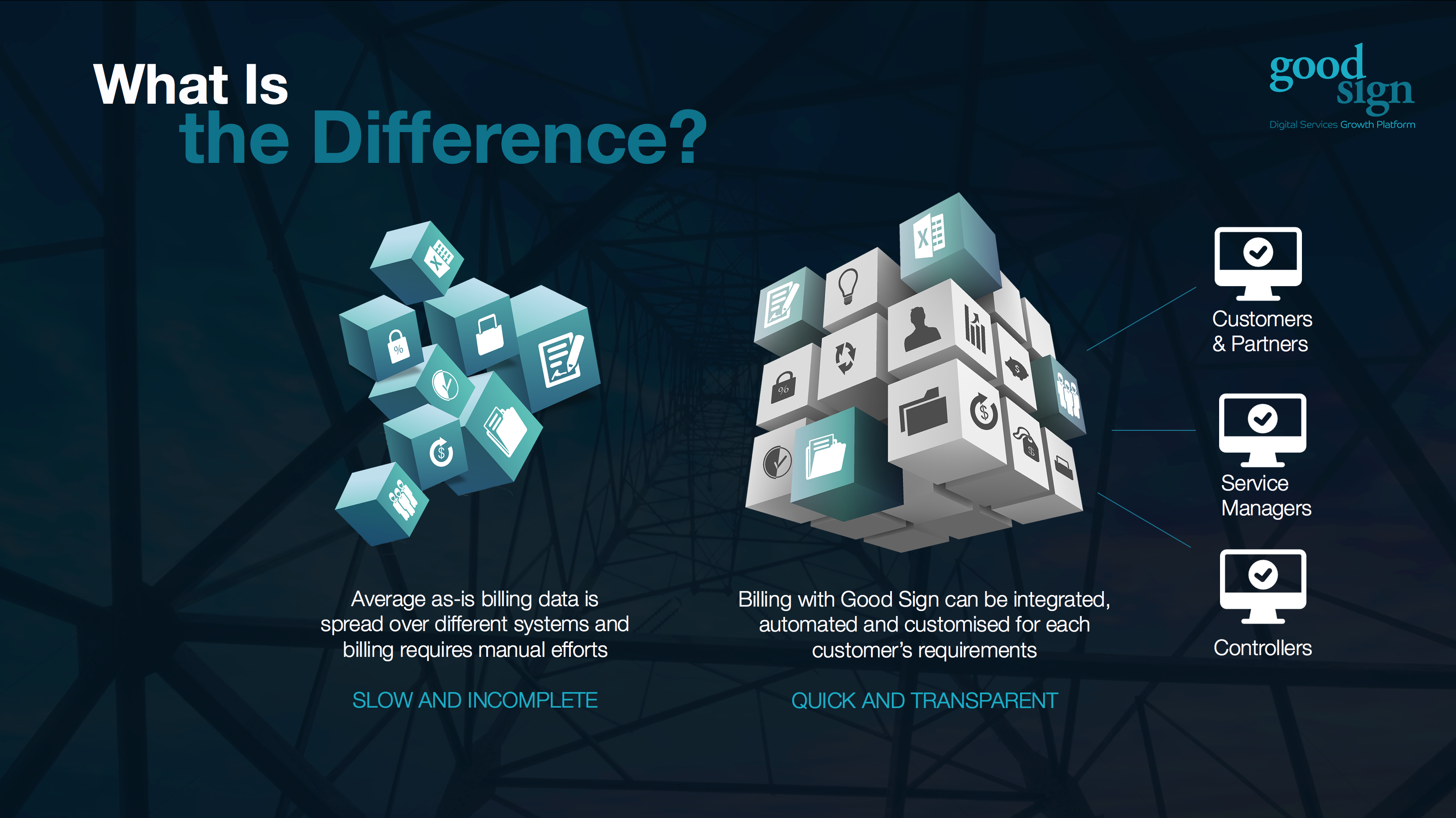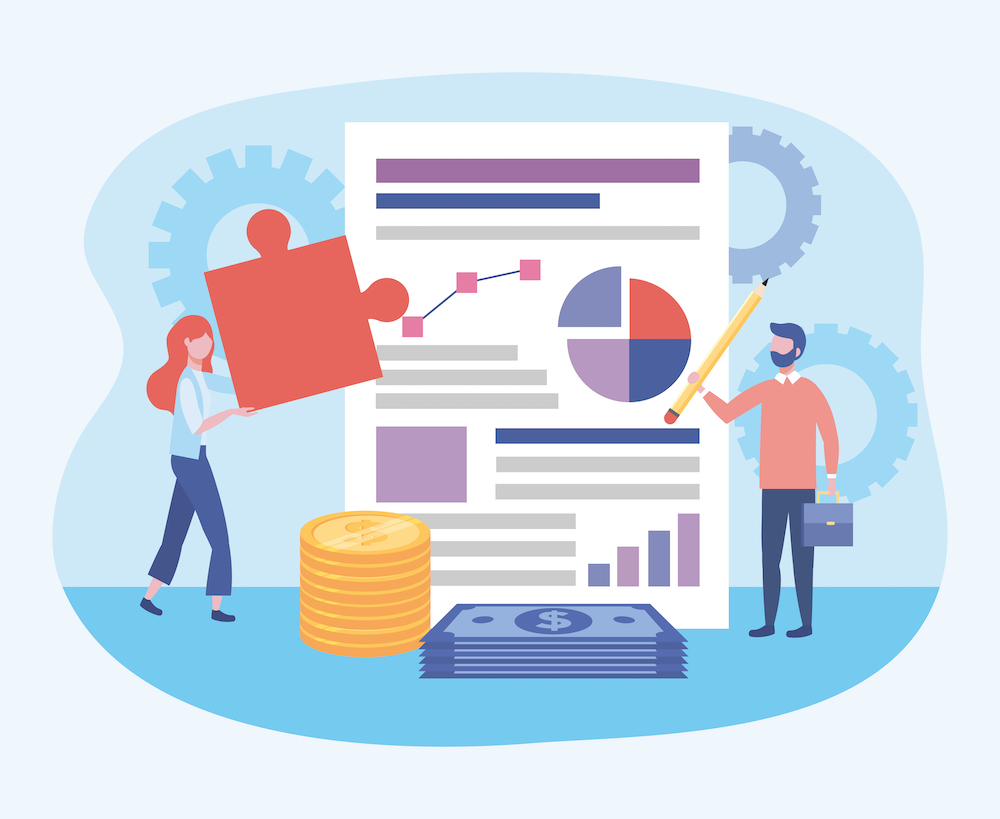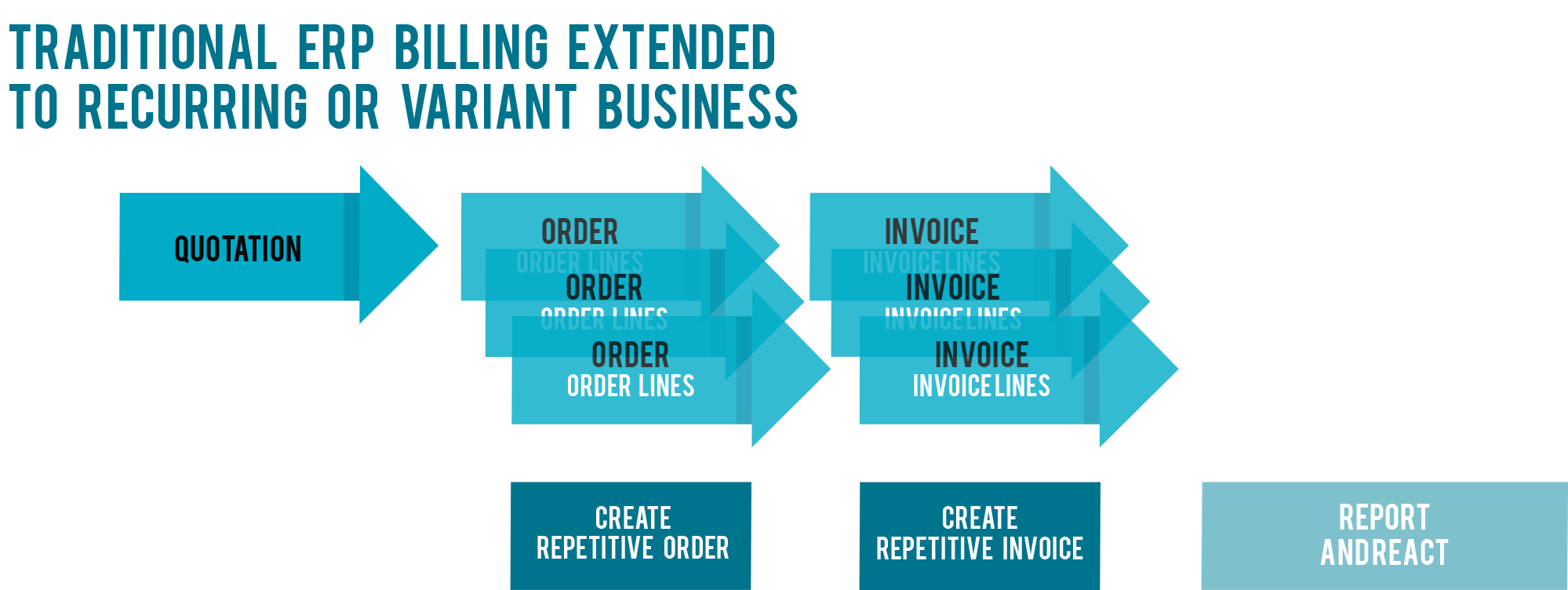Pricing and Billing Automation - 10 Benefits Explained Shortly
Last week we published a blog post: “10 Reasons You Should Invest in Flexible Pricing and Billing”. I thought to continue about that, by explaining...
3 min read
Kasper Ilmolahti : Oct 10, 2016 12:01:15 PM

For any kind of business, ERP systems have established an extremely important role in the past years – even to be counted as the spine of the operations. Companies have become dependent on the large number of core services provided by these systems from accounting and inventory management, all the way to HR.
The fundamental ERP data model is based on the assumption that organization sells physical items in a one way or another. This traditional straightforward logic that makes the ERP systems so robust and capable make them poor in performing tasks which have become the new standard of the industry:
Business is radically transforming into Subsciption Economy from the Order-Ship-Invoice-Collect-Recognize-cycle, on which the ERPs have so long dominated the field.
In the last years the whole model of sales has been changing rapidly. More often than not companies find themselves packaging their products in the shell of services. Even the most profound traditional products have gained new life in service business model. Simultaneously the supply of intellectual products has multiplied.
For example, previously if data needed to be saved or backed up, an external hard drive was required. When the drive was full, an additional hard drive had to be purchased. But what if all of the capacity was not needed 100% of the time? It just wasn’t possible to go and buy half of a hard drive for 50% of the time.
Nowadays this problem has been solved by cloud storage. The difference is not only the actual location of the data, but also the purchasing model. Subscribed capacity may change over time. The buyer may only pay for the amount of storage used. Additional services like backups or extra security and whatnot can be purchased easily.
When this transformation towards new kind of business models begun, the first logical choice of action was to try to modify the ERP systems to understand new logic.
At first it only required minor changes to be able to configure renewed business models.
For example, there isn’t really anything complicated about charging 5€/month for a service, but the problems with incumbent systems arise when the subscriber wants to change the plan in the middle of the month. It wouldn’t be fair to bill for a whole month when the subscription changed at the 5th. And that’s just the tip of the iceberg…
The business variation has been growing and configurating ever-more complex charging rules has become more and more difficult
When certain functions just couldn’t be performed natively with the ERP and the long-lasting improvement projects were on the way (or on a planning stage), the new set-ups especially in billing, had to be made manually. Suddenly the companies transforming into service companies noticed that the only option was to hire more people to gather usage data and count billing values for the ever more complex customer specific contracts. - And manually enter the billable values into the ERP systems.
Manual labour limits launching of new models and calls for human mistakes. Ultimately limiting growth and introducing lost revenue potential.
However, the ERP systems still are the backbone of corporate operations, and don’t get me wrong, they won’t be replaced by any other system in a long time. The fact is just that the current data model of ERPs makes it nearly impossible for them to track complex, continuos and variable packages.
Due to this reason, companies should try not to limit their vision of improving the system to just the amount of functions the ERP can process. Nor should companies have to base new business models on manual labour at the backend.
Instead, companies should acquire a complementary system built to integrate operational systems (such as ERP Systems, Service Management Systems, Service Provisioning Systems, Maintenance Systems and IoT Platforms).
Today’s service business deserves robust IT support to orchestrate transparent end-to-end service chains from contract and service transactions to billing data and financial transactions.

Good Sign establishes a communication flow with ERP systems and other operational systems removing barriers to flexibly offer end customers what they want and yet automatically provision multi-layered services and bill customer specific usage and pricing schemes.
Our Customers uncover 10% non-billed revenue resulting into 40% profit increase with 70% improved cash flow and 90% of manual administration eliminated. Our Customers are 100% guaranteed for being able to launch new digital service business models and pricing schemes.

Last week we published a blog post: “10 Reasons You Should Invest in Flexible Pricing and Billing”. I thought to continue about that, by explaining...

Billing Automation Ensures the Quality of Invoicing When any billing department collects information about service usage and manually assures correct

Good ERP system is an essential tool to support product sales, manufacturing, warehousing, delivery and billing. However, the ERP mode of operation...